ANYWHERE, ANYTIME HF: The Evolution of the Elecraft KX1 Transceiver
By Wayne Burdick, N6KR
Special to the ARS Sojourner
If there is a place, and you can get to it, you must operate from there.
—Ade Weiss, WØRSP, Joy of QRP
Some years ago at the Dayton Hamvention I did a presentation entitled Ergonomics and Amateur Radio. It was not lost on either me or the audience that the title was an oxymoron. I spent an hour suggesting ways to improve the situation.
While discussing field operation, I alluded to something called a “trail friendly radio” (TFR), and speculated on what form it might take. Ergonomically, it’s an interesting assignment. Suppose you have no table? No chair? No room to string up a dipole? Suppose like Ade Weiss, you wanted to operate from anywhere?
Though the need for a trail-friendly radio has been evident for years, we can thank Richard Fisher, KI6SN, for giving the genre a name. He and Russ Carpenter, AA7QU, popularized it here on the ARS web site in the form of the TFR Challenge, and many interesting designs have resulted. Cam Hartford, N6GA, and I talked about it at length at the Zuni Loop field day site one year, when Cam showed me his own beautifully-designed TFR.
I’ve always wanted to explore TFRs myself, with the goal of optimizing them for small size, ease of use and maximum integration. But the idea had to simmer and morph in my mind for about a decade before all pieces of the puzzle came together – in my case, as the KX1.
Early Attempts
The story of the KX1 really begins in the 1970s. Like many hams who grew up in the era when transistors and ICs had just become affordable, I had the great fortune to acquire a copy of Solid State Design for the Radio Amateur by Wes Hayward, W7ZOI, and Doug DeMaw, W1FB (silent key, 1997). Armed with a Radio Shack etch-resist pen and ferric chloride, I home-rolled Wes’s Mountaineer, a crystal-controlled, direct-conversion, 40-meter transceiver. From then on I was hooked on both homebrew and QRP.
But it was the small, grainy photo of Wes operating the Mountaineer with gloved hands and wool cap – while while standing – that fired my imagination. Wes listed the many difficult constraints he had to satisfy in this design. The rig had to be small and lightweight to be suitable for backpacking, which dictated the use of QRP and a small battery pack. The antenna system had to be similarly light, so he opted for a simple dipole and RG-174 miniature coax cable. It had to be usable in cold temperatures, which suggested crystal control. Finally, it had to be usable in many different operating situations, including sitting on the ground, lying in a sleeping bag, or standing beside a trail. These constraints would inspire my own explorations in the TFR design space.
In 1989, I designed something I called the Safari-4 (QEX magazine, Oct. / Nov. / Dec. 1990). While not exactly a TFR, this 5 x 7 x 3″, 4-band, 1-watt transceiver did push the envelope on integration. It included an internal 0.8 amp-hour gel-cell, manual antenna tuner, SWR bridge, and keyer, and had a stack of four transverter boards covering 40, 20, 15, and 10 meters. Like the KX1, it had keyer paddle mounted on the front. Unfortunately it was actuated by skin resistance, and despite the gold-plated comb pattern on either paddle, it suffered when humidity was low. It also could not be used with gloves on.
Still, a rig like this had been my dream for many years. All you needed to set up a station was a random-length wire and a pair of headphones. I used the Safari-4 at every opportunity, and once managed to work Angola from Arizona on 15 meters with 200 milliwatts and a 16′ wire strung horizontally just 8′ off the ground. All of the credit goes to the operator in Africa, of course, and to extremely quiet band conditions.
I built my first truly back-packable, hand-held HF transceiver in 1991 while living in Massachusetts. It was 2 x 4 x 1″, operated on 15 meters only with a VXO and superhet receiver, and had a push-button CW key on the top. With two internal, paralleled 9-volt alkaline batteries, it eked out just one-half watt. This level was significant. According to Solid State Design, a half watt represented a good tradeoff between communications efficiency and battery weight. Taking this wisdom from my QRP heroes for granted, I took the little rig out on many occasions and made several interesting QSOs. The most memorable happened when I was operating mobile, driving north on I-495 outside of Boston one winter day. Using a three-foot-long whip on the roof – a Radio Shack CB antenna re-resonated at 21 MHz – I had a solid, 10-minute QSO with a station in St. Louis.
A PIC in the Pocket
Several years later, after designing a few PIC microcontroller projects at work, I decided to see what a PIC might do for the cause of further transceiver integration. The result was another hand-held, which I dubbed the Koala. This was a 2 x 4 x 1″, half-watt, 40-meter superhet that ran from a single 9-volt battery. The Koala had a keyer, dot and dash buttons on the top cover, frequency counter, battery voltage monitoring, and most significantly, audio-Morse-code frequency readout of all parameters including the VFO. This allowed operation with no display.
I should also briefly mention my club project phase, which led to the NorCal 40, Sierra, and SST transceiver kits. Again, these were not TFRs, but each furthered my goal of optimizing transceivers for portable use. All three were also enhanced by the addition of microcontrollers.
The NorCal 40 was the first NorCal club project. Doug Hendricks, KI6DS, Jim Cates, WA6GER, and others helped me specify the NC40’s features, which included small size, very low current drain, “wireless” construction, and the now-ubiquitous BNC antenna jack – I liked the small size, and I couldn’t find a PCB-mount SO239 anyway. I can’t thank Doug and Jim enough for their efforts, which made this rig and other NorCal projects a success.
The KC-1 keyer / counter option was added when another NorCal member, Bob Dyer, K6KK, started Wilderness Radio to sell the NorCal 40A commercially. The KC-1 used a PIC as a keyer and audio-Morse frequency readout – features now widely found in small transceivers. But I added one other unique firmware feature: the operator could use the keyer paddle to enter a target VFO frequency in kHz, then rotate the VFO knob until they heard an acknowledgement from the KC-1.
To minimize complexity while preserving low current drain, I used plug-in band modules in the Sierra, NorCal’s second transceiver project. Having tried a band switch in the Safari-4 and modules in the Sierra, I am now a firm believer in a third solution—latching relays—which I’ve used in every multi-band rig since, including the KX1. I later designed the KC-2 keyer / counter for the Sierra – yet another PIC-based unit. By running the KC-2’s MCU at just 100 kHz, and using a non-multiplexed LCD display, I was able to keep RFI to an absolute minimum. The Sierra construction article, sans KC-2, can be found in any ARRL Handbook from 1996 through 2003.
In the case of the SST, or Simple Superhet Transceiver, I tried to cut the size, parts count – 85 or so – and current drain to absolute minimums while preserving ease of construction and decent performance. The receiver still included AGC, the transmitter put out 2 to 3 watts, and there was room inside the box for a 9-volt battery and a KC-1. The combination of these features has made the SST popular as a Spartan Sprint rig. I suppose it could even qualify as a sorta-TFR if the KC-1 controls and dot / dash buttons were installed on top.
The NC40A, Sierra, and SST are all still available from Wilderness Radio.
Five Field Days
Before I could turn my attention to a serious TFR, a most amazing thing happened: I quit my day job. I did this even though my wife and I were only a few months away from having our first child. What inspired this irrational behavior was my teaming up with Eric Swartz, WA6HHQ, to start Elecraft.
Eric and I had met quite a bit earlier, through NorCal. He was recruited as a technical advisor to the club, and helped me with some last-minute Sierra design issues. He also proved he was serious about QRP by racking up over 100 countries on his NorCal 40.
But it was doing Field Day together for five straight years that laid the foundation for Elecraft and for our transceiver designs. At FD 1995 and 1996 we used a hodge-podge of radios, batteries, antenna tuners and antenna switching schemes, often doing more QRP experimentation than operating. Finally, in 1997, we looked at that year’s pile of gear and concluded that there just had to be a better way. By early evening we had abandoned operating and were sketching out the K2 on the backs of FD log sheets.
The K2 was our notion of the ultimate Field Day rig, with all-band coverage, wide receiver dynamic range, current drain of about 200 mA, and internal accessories – battery, ATU, antenna switch, power meter, and contest keyer. But it was not really a backpacking transceiver. So in 2000 we introduced the K2’s baby brother, the K1. Now we were getting close!
The K1 is just a bit larger than a NorCal 40, draws 55 mA or so on receive, covers up to 4 bands without modules and includes an integral battery and ATU. We wanted the K1 to function like a TFR, so we designed a special tilt stand (KTS1) that would allow the rig to be aimed up, even when it was resting on the ground. The tilt stand is fully collapsible for transport, keeps the connectors up off the ground, and provides a place to mount a keyer paddle such as the Paddlette Backpacker.
But the K1 still doesn’t meet all of the design constraints for a TFR. It’s too heavy for many backpacking expeditions, and can’t be used conveniently in difficult operating situations, such as when sitting in a camp chair, lying in a sleeping bag, or standing up. So for two years the idea continued to simmer. And then, finally, something bubbled over.
Inspiration, Perspiration
One morning in March, 2003, I woke up suddenly with the design for a plug-in, physically-reversible keyer paddle in mind. This was the all-important missing link. The trick was to mount the paddle at a 45-degree angle for ease of use. I could thread a metal-bushing eighth-inch stereo plug into the custom mounting bracket and use a captive thumb screw to hold the paddle firmly to the panel. I quickly sketched out a TFR-style radio around this paddle: controls facing up, paddle facing forward, and batteries accessible via a removable bottom cover.
A few days later Eric and I fleshed out a set of performance and feature requirements. Like usual, Eric pushed performance and features, while I aimed for low current drain and ease of construction. Then, at the expense of other projects that I had been pursuing, I spent the next month doing the design.
This is where, for me, all of the constraints and possibilities of the CW TFR finally converged. I now felt that it was possible to satisfy all of the requirements Wes Hayward had laid out for us in the Mountaineer, while providing much better performance, enhanced usability, multiple bands and more operating features.
The most important design decision was to use a DDS VFO. This would eliminate a number of parts, including the transmit mixer and its crystal oscillator. While it wouldn’t provide the high spurious-free dynamic range of an L-C VFO, it would be very stable over a wide temperature range, and also frequency-agile, allowing full coverage of 40, 30, and 20 meters as well as nearby SWL bands. Other designers had used DDS VFOs in QRP rigs with success, notably Dave Benson (NN1G) in his DSW series. But I’d been holding out for a DDS chip with much lower current drain. Luckily, one appeared: the Analog Devices AD9834, which draws just 5 to 8 mA.
Another critical question was whether to use an LCD or LED for the 3-digit display. An LCD would have required a backlight, complicating packaging given the small area available for the display. It would also have required a separate display driver, since the KX1 had to get by with only a 28-pin MCU. So we opted for a rugged, incredibly efficient red / orange LED. The unit we selected can be driven directly by the MCU (multiplexed), and requires less than 100 microamps average per segment in typical room lighting. For outdoor use, the current requirement increases to as high as 0.8 mA per segment, meaning the LED contributes up to about 10 mA average (12 segments lit) at its brightest setting. However, we included two refinements to make this a non-issue: a programmable display-off timer, and a 100 percent audio Morse-code interface, even including menu text.
The Morse-audio feature allows the KX1 to be used without looking at the display, which is great for bicycle mobile operators, too-sleepy-to-keep-your-eyes-open Field Day operation, and operation in extremely bright sunlight. But we’ve also discovered that blind hams appreciate the KX1’s Morse-audio interface, and that alone was worth its inclusion.
Revisiting the Power-to-Weight Issue
In order to allow room for the automatic antenna tuner option (KXAT1), we decided to use just six AA cells for the rig’s internal battery pack. We discovered we had to use two 3-cell sockets with a gap in the middle to accommodate the keyer paddle jack and the I.F. and BFO crystals.
Six 1.5-volt lithium cells work very well in this application, providing around 1.5 to 2 watts output. And they last forever, it seems, with a rating of nearly three amp-hours and a very long shelf life. I did six KX1 field-test outings from May through September on a single set of these batteries.
So let’s return to the issue of how much power output is required for a backpacking rig. As you recall, Wes Hayward suggested one-half watt to attain a good power / weight tradeoff. But he didn’t have access to lithium 1.5-volt AA cells, which were invented in 1992. Alkalines have a similar milliampere-hour rating, yet their voltage rapidly drops as they discharge, and the mA-hr rating is based on an end-of-charge voltage of 0.9 volts. In contrast, lithium cells have a nearly flat discharge curve, remaining at about 1.4 volts for some 90 percent of their charge life. They also weigh just over half as much as alkalines – a six-cell pack weighs just 3 ounces.
So the equation really has changed. Given lighter batteries with better performance, I think the optimal power level for backpacking rigs is around 1.5 to 2 watts. This will produce more QSOs and more reliable emergency communications.
Finishing Touches
There are a number of other subtleties in the KX1 design that contribute to its small size and moderate parts-count. For example, the transmit low-pass filter is a careful compromise, covering three bands yet using just one relay. Only three crystals are used in the varactor-tuned IF filter, rather than four (K1) or seven (K2). T-R switching of the receiver’s bandpass filter is handled using a series-tuned circuit and an NPN transistor clamp rather than PIN diodes. The BFO is fixed-frequency, optimized for a 600 Hz sidetone / TX offset. A contacting rather than optical encoder is used, the former being much smaller and still having a long predicted lifespan of more than 100,000 rotations. Four sidetone levels are provided by simply using two outputs on the MCU and two resistors (i.e., a 2-bit DAC). And finally, a simple AGC circuit is used in combination with limiting at the AF amp. The LM386 runs from just 6 volts, so it clamps leading-edge thumps pretty effectively.
Two other features provided the icing on the cake: the log lamp and SWL coverage.
The integrated white LED log lamp elicits a lot of smiles when we demonstrate the KX1. It’s really handy for nighttime operation, allowing you to shut off your larger lantern or flashlight, which might disturb someone sleeping nearby. The LED only requires about 6 mA when operated from internal batteries, and since it has its own on-off switch, it doubles as a book lamp, flashlight, or a visible signaling device. During field test someone suggested that we use a red rather than white LED, since white light attracts flying insects. You can easily swap LEDs if this is a concern.
The KX1’s SWL coverage allows you to get news, time beacons (including WWV at 5, 10, and 15 MHz), weather information, and a variety of perspectives on world events. This seemed like a useful addition to a backpacking rig, since it may be the only radio you carry, and it has proven popular with early builders. The crystal filter can be widened out to about 2 kHz to listen to AM and SSB stations. For flexibility, we also added 5 kHz tuning steps, three frequency memories per band, and USB / LSB capability.
The KX1 could be made much smaller if we had used surface-mount components and AAA batteries, left out the ATU, and had been willing to pack the controls together more tightly. While this might help someone win in the “skinny” division of the Sprint, it would also make the rig less rugged and a lot harder to build and use. Instead, we designed the rig from the ground up to be a reliable, easy to build, easy to use, fully-integrated station. Our chosen 3″H x 5″W front panel size allows quite a bit of room for controls and display, and the 1.2″ height allows for AA batteries and an automatic antenna tuner.
K-zero (Not!)
Initially we didn’t know what to call the rig. We tried and rejected K.5, KR5, K-zero, and other names that would complete the dubious mathematical series { K2, K1, … }. We also rejected “Elecraft Elf,” although we may use that for something else . . . someday. “KX1” won in the end. “K” would keep the KX1 firmly planted in our line of transceivers. “X” was a reference to “eXtreme” operating conditions or “eXtremely small.” And “1” seemed a reasonable choice, since the rig is just too small to be a “2”.
When I first envisioned the KX1, what came to mind right away was the Adventure Radio Society. Russ and I had had a meeting about his ARS proposal a few months before the launch, and it was clear that he really did have adventurous and innovative plans for the organization. Given the many serious backpacking trips taken by Russ and other ARS members, the KX1 just seemed to be a good fit. I’m hoping we’ll get a lot more feedback on the design as the rigs find their way into the field.
But I also had a more esoteric goal for the KX1: I wanted it to be the ultimate radio for couch potatoes. Imagine lying on the couch, working CW DX with a paperback-novel-sized lap-top transceiver. It’s an entirely new way to experience CW – anywhere, anytime!
* * * * * * * * * * *
Wayne Burdick, N6KR, a founder of the Adventure Radio Society with membership No. 2, is one of amateur radio’s leading designer / innovators and co-owner of Elecraft, manufacturer of the KX1 trail-friendly transceiver.
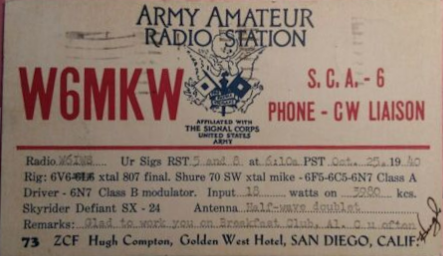 Since July I have been attending the School of Advanced Military Studies (SAMS) here at Ft. Leavenworth, KS. SAMS is a 10 month course that “educates the future leaders of our Armed Forces, our Allies, and the Interagency at the graduate level to be agile and adaptive leaders who think critically at the strategic and operational levels to solve complex ambiguous problems”. The majority of our classes are focused on the study and application of the elements of national power, international relations, and operational design. The end result is a planner who spends a year on a division or corps staff helping to draft campaign plans for operations. One of the requirements for graduation is to write a monograph (like a master’s thesis) on a topic relevant to the military. I chose as a topic to write about the history of the Army’s Military Affiliate Radio System (MARS).
Since July I have been attending the School of Advanced Military Studies (SAMS) here at Ft. Leavenworth, KS. SAMS is a 10 month course that “educates the future leaders of our Armed Forces, our Allies, and the Interagency at the graduate level to be agile and adaptive leaders who think critically at the strategic and operational levels to solve complex ambiguous problems”. The majority of our classes are focused on the study and application of the elements of national power, international relations, and operational design. The end result is a planner who spends a year on a division or corps staff helping to draft campaign plans for operations. One of the requirements for graduation is to write a monograph (like a master’s thesis) on a topic relevant to the military. I chose as a topic to write about the history of the Army’s Military Affiliate Radio System (MARS).
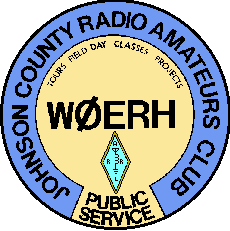 Last night I attended a meeting at the
Last night I attended a meeting at the 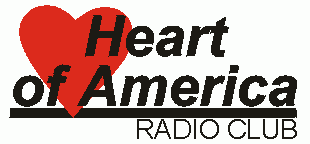 On Tuesday I attended the meeting of the
On Tuesday I attended the meeting of the 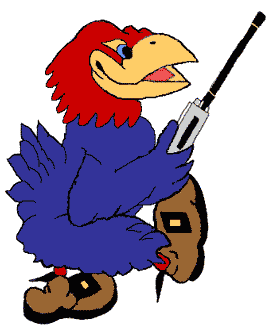 Thursday night I was out at the
Thursday night I was out at the 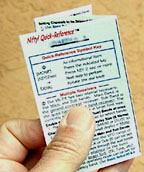
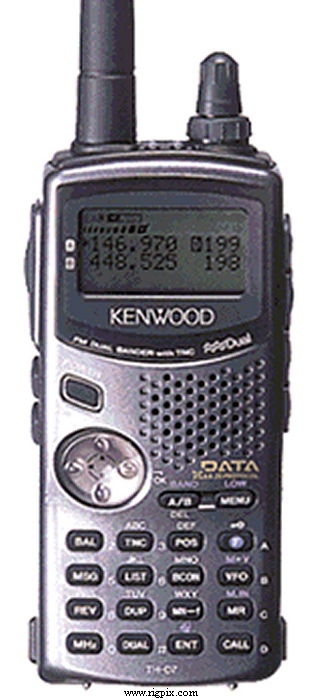 I eventually figured out how to set the tone and was on the repeater with the other folks. Then with a bit more thought and troubleshooting, I discovered my feedline connection to the rig had come loose and with that fixed I was back in business. Part of the problem is that I have a relatively new rig in the truck, the Kenwood TM-D710A. It is a very complicated rig and I have only scratched the surface on how to operate it. I was able to interface it with the Garmin Nuvi 350 thanks to a cable from
I eventually figured out how to set the tone and was on the repeater with the other folks. Then with a bit more thought and troubleshooting, I discovered my feedline connection to the rig had come loose and with that fixed I was back in business. Part of the problem is that I have a relatively new rig in the truck, the Kenwood TM-D710A. It is a very complicated rig and I have only scratched the surface on how to operate it. I was able to interface it with the Garmin Nuvi 350 thanks to a cable from 

 The title of this post is a little misleading. As I mentioned before, I am attending the Army’s Command & General Staff College (CGSC) here at Fort Leavenworth, Kansas (… I bet you thought I was out here in Kansas just for the nice weather). One of the new requirements we have as students at is to egage in “Strategic Communication”. Wikipedia defines strategic communications as: communicating a concept, a process, or data that satisfies a long term strategic goal of an organization by allowing facilitation of advanced planning. Our requirements as students to engage in strategic communication does not exactly line up with that definition, but I think it gives you an idea of where the Army is headed. The bottom line is the Army wants to develop officers who are familiar and comfortable in dealing with the media in order to get the Army’s “message” out. In the past the military has been traditionally media shy (understatement), either making heavy use of the “no comment” or deferring to our public relations officers. No more. The Army recognizes this is the new media age and those that get their story out first, in a clear and understandable fashion are likely to better garner public support… both domestic and international. Okay… so back to school. My requirements, as related to strategic communications, are to: (1) participate in an actual media interview (television, print, or radio), (2) speak to a community group, school, or other organized gathering of citizens, (3) write professionally by submitting a letter to the editor, Op-Ed piece, or article for publication, and (4) participate in a reputable blog about their military service.
The title of this post is a little misleading. As I mentioned before, I am attending the Army’s Command & General Staff College (CGSC) here at Fort Leavenworth, Kansas (… I bet you thought I was out here in Kansas just for the nice weather). One of the new requirements we have as students at is to egage in “Strategic Communication”. Wikipedia defines strategic communications as: communicating a concept, a process, or data that satisfies a long term strategic goal of an organization by allowing facilitation of advanced planning. Our requirements as students to engage in strategic communication does not exactly line up with that definition, but I think it gives you an idea of where the Army is headed. The bottom line is the Army wants to develop officers who are familiar and comfortable in dealing with the media in order to get the Army’s “message” out. In the past the military has been traditionally media shy (understatement), either making heavy use of the “no comment” or deferring to our public relations officers. No more. The Army recognizes this is the new media age and those that get their story out first, in a clear and understandable fashion are likely to better garner public support… both domestic and international. Okay… so back to school. My requirements, as related to strategic communications, are to: (1) participate in an actual media interview (television, print, or radio), (2) speak to a community group, school, or other organized gathering of citizens, (3) write professionally by submitting a letter to the editor, Op-Ed piece, or article for publication, and (4) participate in a reputable blog about their military service. 